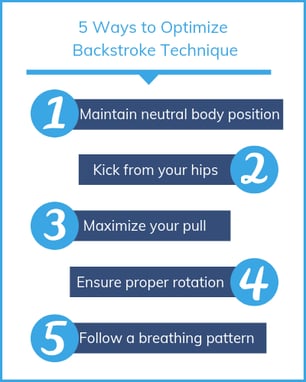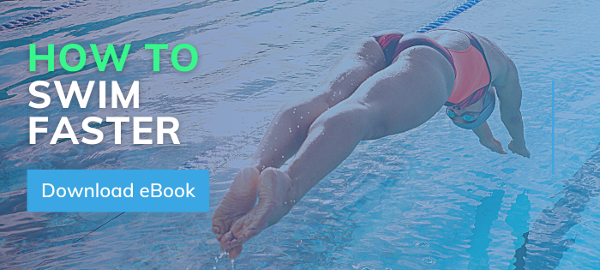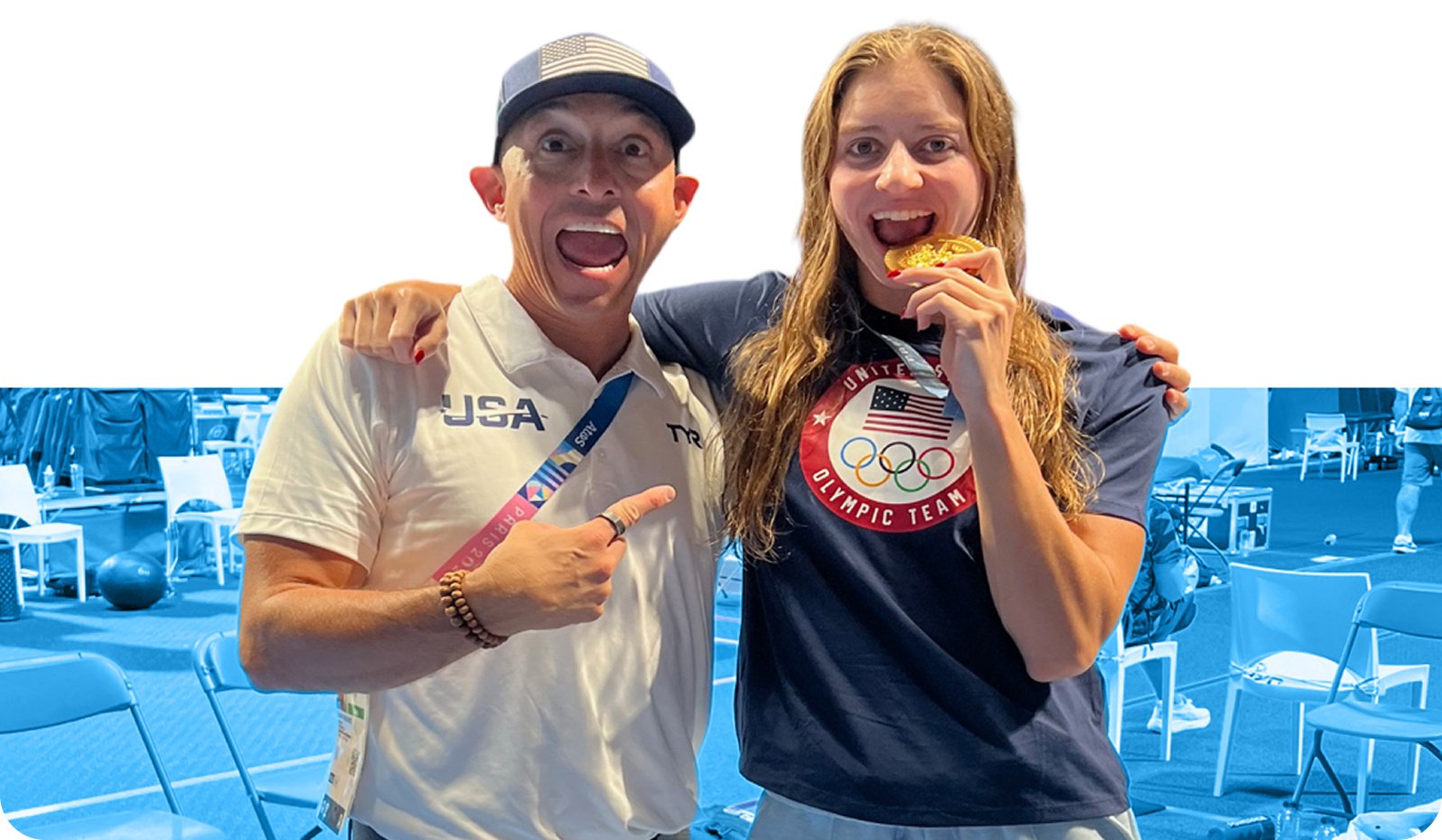Learning to swim backstroke isn’t an impossible task. Once you’re able to float on your back, everything else comes fairly easily with enough practice. But, actually swimming backstroke well can be slightly more challenging.
Here are 5 ways to optimize your backstroke technique:

1. Maintain neutral body position
Proper body position is critical in minimizing drag and improving propulsion, for any stroke. In backstroke, a neutral, horizontal position also helps prevent water from getting all over your face and up your nose.
| Keep your head steady, looking straight up at the sky or ceiling. |
Tucking your chin down or tilting too far back will not only slow you down, it will also cause unnecessary strain on your neck. A neutral head position will also make it easier to prevent the hips and legs from sinking. Combine this with good kicks and pulls, and you’ll move through the water more efficiently.
2. Kick from your hips
| The key to good backstroke kicks is to kick from the hips, not the knees. |
Kicking from the knees means you’re bending them back too much, which will increase drag. One way to tell if you’re kicking from the knees is when your knees break the surface of the water. You want to make sure that only your toes are breaking surface on the upward motion of the kick.
3. Maximize your pull
Maximizing your backstroke pulls starts with good hand entry, to properly set up for the catch. Ideally, you want your pinky to enter the water just slightly past shoulder width. Crossing your arms over the midline, or entering too far out makes it more difficult to initiate the catch.
| Set up for the catch with good hand entry, and time your rotations just right. |
Once your arm is in the water, bend your elbow so your forearm is facing the back end of the pool and push the water straight back through the water, rotating to your opposite side. As this is happening, your other arm will be moving through the recovery phase of the stroke, leading with the thumb as it exits the water, before rotating outwards for the entry.
Time your strokes just right - this will help with rotation, and lead to a faster stroke rate.
4. Ensure proper rotation
Rotations and pulls go hand in hand. Rotating the right amount (ideally around 30 degrees) sets you up with a good catch position, without causing your shoulders to twist at a weird, straining angle.
| When you properly rotate with each stroke, you're able to utilize your back and core for power. |
This will enable you to propel yourself farther through the water, increasing your distance per stroke and improving the efficiency of your strokes.
5. Follow a breathing pattern
Just because you’re on your back with your face out of the water, doesn’t mean you should breathe whenever you feel like it.
| Just as with freestyle, breaststroke, and butterfly, matching your breaths with your strokes will be better for your technique than breathing at random intervals. |
One reason to follow a breathing pattern is to prevent water from getting into your nose or mouth. Breathing at the moment with the least water splashing around from your pull keeps your airway clear. Following a breathing pattern also makes it easier to stay in your rhythm and be consistent with your pace.
Improving your technique is one of the most important ways to swim faster. And when you’ve learned the proper backstroke technique, you will be able to put more focus into training for strength and speed once training intensity starts to pick up for the season.

.jpg)




.png)
.png)